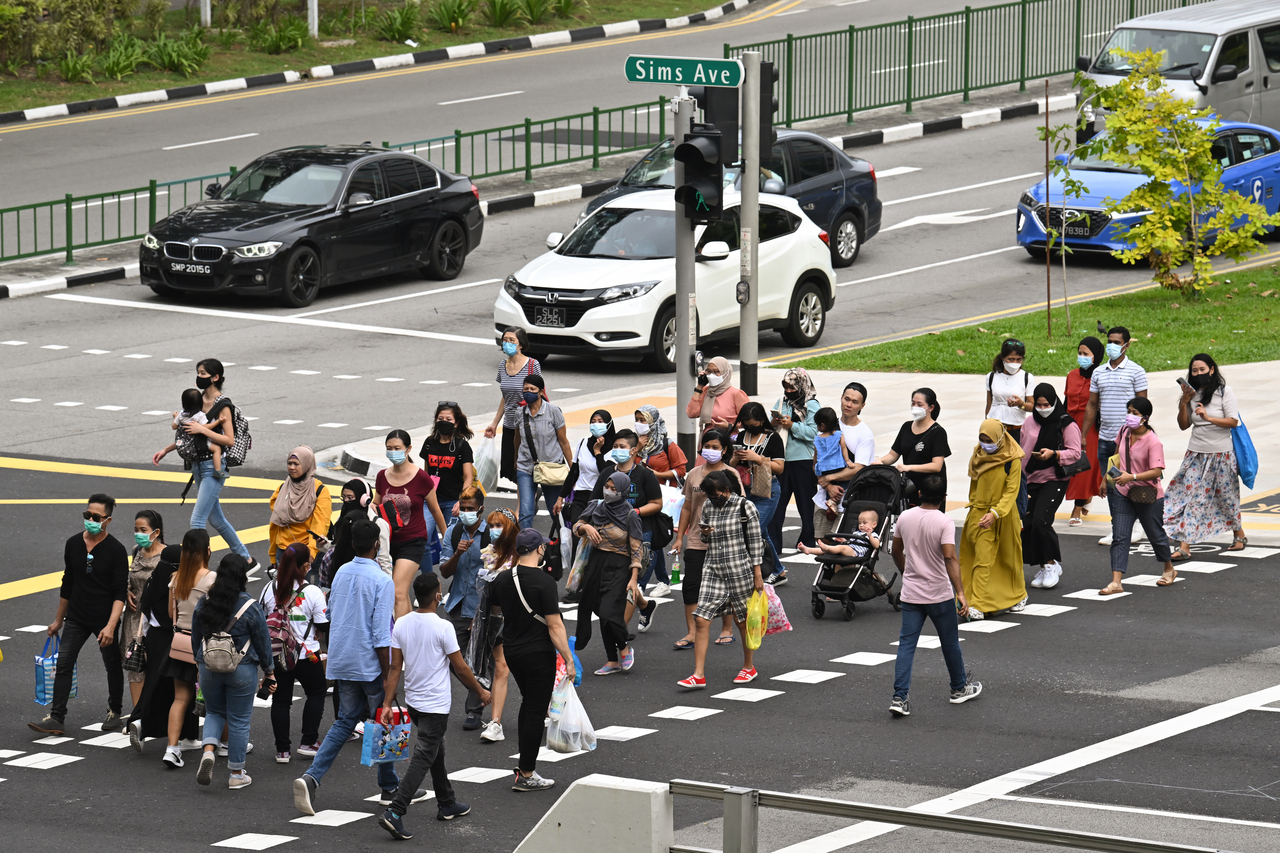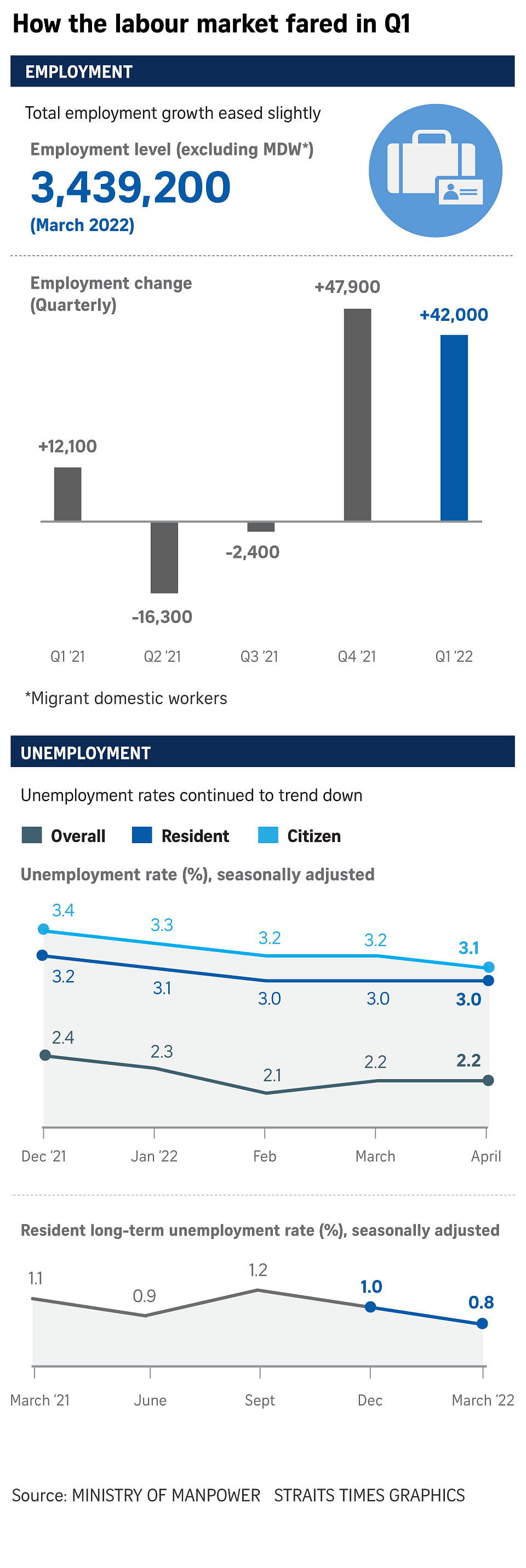Job vacancies hit new high for Q1 as firms backfill roles, hire to meet demand
Sign up now: Get ST's newsletters delivered to your inbox

The number of vacancies rose to 128,100 in March, up from 117,100 in December.
ST PHOTO: LIM YAOHUI
Follow topic:
SINGAPORE - Singapore's labour market continues to tighten, with job vacancies hitting a new high in the first quarter of this year despite a slower rate of increase.
This comes as some businesses post vacancies to backfill positions and hire to meet rising demand.
The number of vacancies rose to 128,100 in March, up from 117,100 in December, according to a labour market report released by the Ministry of Manpower (MOM) on Friday (June 17).
The ratio of job vacancies to unemployed people also grew to 2.42 – or more than two positions available for every unemployed person.
MOM attributed this – the highest since 1998 – to "a decline in unemployed persons and increase in vacancies".
However, the 9 per cent rate of increase is slower than the 17 per cent seen in the previous quarter, said the ministry.
The bulk of the vacancies were in construction and manufacturing, mainly for non-professional, managerial, executive and technical (non-PMET) roles typically held by migrant workers, as well as PMET roles in the financial services, information and communications, public administration and education, and professional services sectors.
Overall, total employment, excluding migrant domestic workers, grew by 42,000 in the first quarter this year, slightly lower than the increase of 47,900 in the previous quarter.
The hiring of non-resident workers formed the bulk of the total employment growth. This was driven by the progressive lifting of border restrictions and employers filling a backlog of vacancies for jobs that are more reliant on migrant workers, said MOM.
Yet, non-resident employment in March remained 15 per cent below pre-pandemic levels.
Meanwhile, resident employment – comprising Singaporeans and permanent residents – exceeded pre-pandemic levels in December 2019 by 3.9 per cent, highlighted MOM.
However, trends were mixed across sectors.
"Resident employment continued to rise in growth sectors such as financial services, information and communications, professional services, and health and social services," said MOM.
"On the other hand, it declined in consumer-facing sectors, mainly due to the seasonal pattern of temporary workers hired for year-end festivities leaving in the following quarter."
Elsewhere, the resident and overall unemployment rates held steady in April at 3 per cent and 2.2 per cent respectively. The citizen unemployment rate dipped slightly in April, down to 3.1 per cent from 3.2 per cent.
Retrenchments also declined to a record low of 1,320 – or six for every 10,000 employees.
Among retrenched residents, the percentage who re-entered employment within six months post-retrenchment rose to 71.5 per cent, a high last seen in 2015.
MOM cautioned that the deterioration of the external economic environment, due in part to the Russia-Ukraine conflict, has weakened the demand outlook for some outward-oriented sectors.
In a Facebook post, Manpower Minister Tan See Leng said: “With the relaxation of border restrictions, we expect the inflow of non-resident workers to continue increasing, which will help to ease the tightness in the labour market in coming months.
“At the same time, the Government will continue to support companies to upskill their local workforce, to help them adapt to new growth areas and meet the labour demand.”
“At the same time, the Government will continue to support companies to upskill their local workforce, to help them adapt to new growth areas and meet the labour demand.”
Mr Eugene Chong, senior rewards consultant from global consultancy Mercer, said the high number of vacancies could be down to a skills mismatch, and workers looking to take a break in between jobs.
The report also found higher turnover than before the pandemic among PMETs in the information and communications, financial services, and health and social services sectors, among others.
Reasons include burnout, particularly among those at the front line of the pandemic, such as healthcare workers.
He added: “Team-based work is also a core part of some of these sectors.
“The lag between an employee leaving and hiring often results in the workload being spread among existing employees, which may then result in burnout and higher turnover.”
He added: “Team-based work is also a core part of some of these sectors.
“The lag between an employee leaving and hiring often results in the workload being spread among existing employees, which may then result in burnout and higher turnover.”


